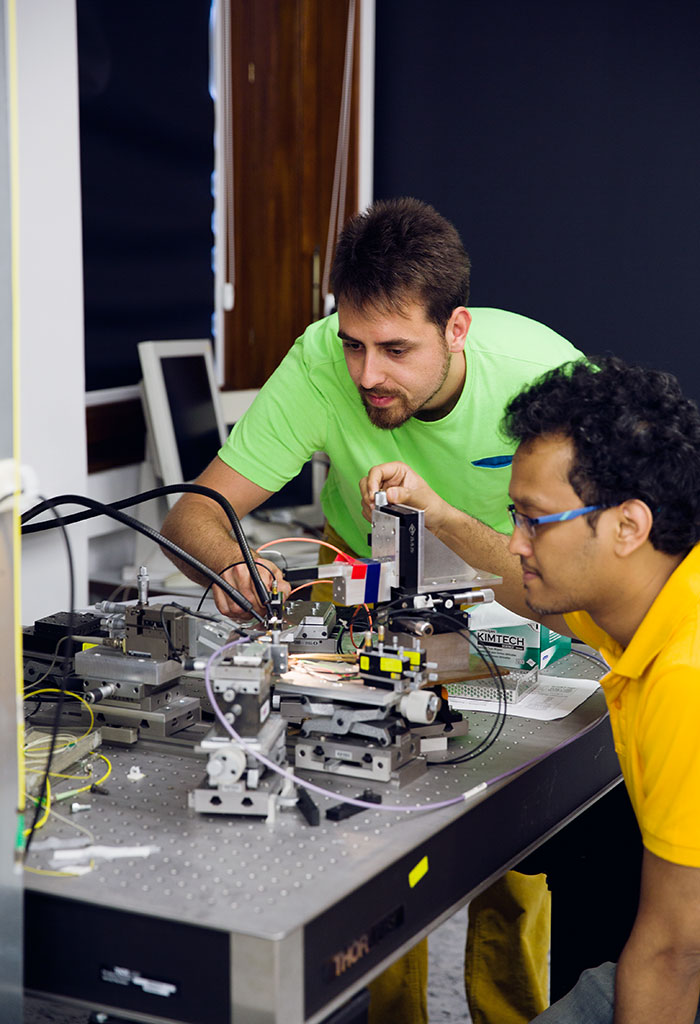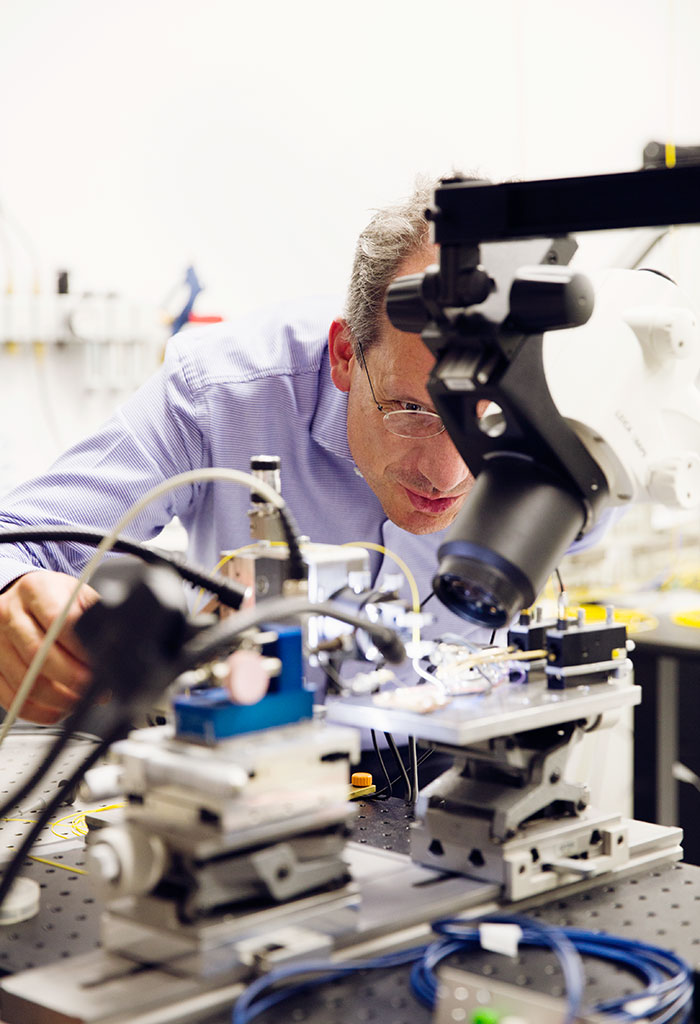2016/08/11
Installing new optical fibres is expensive. So network operators want to make better use of their existing capacities. A new type of laser diode from Darmstadt could help. It has now been put into practice with the industry.
Light floods through the extensive office windows on the sixth floor of the Hans Busch Institute at the Technische Universität Darmstadt. Franko Küppersis at his desk, holding a gleaming grey fibre as fine as a hair up to the sun. Light flows through these fibres as well, although not for lighting, but to carry data.
Light as a communication medium has occupied the thoughts of this electrical engineering professor for a long time. He knows the unrivalled strength of optical fibres: thousands of gigabytes shoot through them every second. On the other hand, the copper cables which nowadays often still span the so-called „last mile“ to the households, only transmit data at a thousandth of this rate.
As the former head of a respective research department at Deutsche Telekom, Küppers knows well what is hindering the spread of optical fibres. New infrastructure costs a lot of money. So network operators try to make better use of their existing capacities. A well-known way of doing this is so-called multiplexing, which combines up to 80 signals and simultaneously directs them though a single optical fibre. Think of it as a sort of inverted prism. This normally splits a beam of white light into its component colours. It also works in reverse: if beams of different colours enter the prism, it combines them to make a beam of white. As different signals can be carried by means of different coloured light, it is possible to combine more information in a white beam than it would be in a beam of a component colour.
Opening up a vast market
„Multiplexing was the key innovation, as without it, neither the broadband internet we know today nor the mobile internet would be possible“, enthuses Küppers. His team from the Department of Electrical Engineering and Information Technology has crucially improved this technology, thus opening up a „vast market“, as the researcher puts it. A joint Turbo for the broadband network project involving the team from Darmstadt and three industrial companies and sponsored by the Federal Ministry of Education and Research (BMBF), recently got the technology ready for field tests.

Julijan Cesar and Sujoy Paul, who are studying for their doctorates at Küppers’ Institute. Photo: Katrin Binner
The key part came from Darmstadt: A microelectro-mechanical system (MEMS), integrated with a laser diode, to which it gives a new and unusual feature. Laser diodes usually emit light of a specific wavelength. They inject light pulses of this colour into the optical fibres. In optical multiplexing, you need up to 80 different laser diodes of different colours. This is because each information channel transmits with a different light wavelength. „This causes a lot of expense“, says Küppers.
Because for one thing, it requires extremely precise manufacturing to ensure that the diode emits exactly the required wavelength. „There are a lot of rejects“, acknowledges Küppers. There must also be spare diodes available for all 80 channels.
Like a stringed instrument
Küppers is now offering an alternative – a laser diode that can be tuned in wavelength. The wavelength emitted by the diode can be chosen anywhere within a certain range. The advance can be compared to a stringed instrument. Previously, so to speak, guitars never used to have frets, so every string could only produce a single sound. The Darmstadt invention provides the frets, and thus the opportunity to elicit many sounds from every string. read more
Christian Meier















